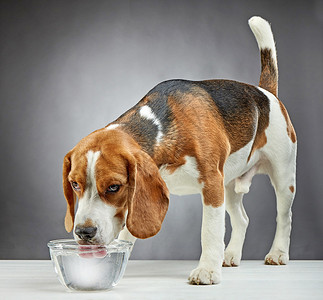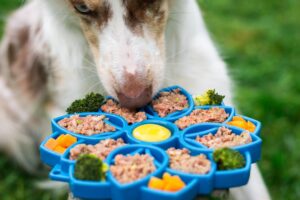Introduction
As a pet parent, you’ve probably noticed your furry friend’s fascination with running water. My cat, Whiskers, used to paw at the tap every morning until I caved and bought her a smart pet fountain. But with so many options out there, how do you pick the right one? In this guide, I’ll walk you through everything you need to know—from materials to maintenance—so you can make an informed choice. Let’s dive in!
1. Why Your Pet Needs a Smart Drinking Fountain
If you’ve ever seen your dog or cat stubbornly ignoring their water bowl, you’ve probably wondered why hydration seems like such a battle. But what if there was a way to make it easier for them—and better for their health? Enter the smart drinking fountain. It’s not just a trendy pet gadget; it’s a game-changer for your pet’s hydration and overall well-being. Let me tell you why your furry friend might really need one.
1.1 Hydration is Key to Pet Health
We all know hydration is crucial for our health, but it’s just as important for our pets. Did you know that pets need around 50–70ml of water per kg of body weight daily(According to the American Veterinary Medical Association, AVMA, 2023)? That’s a lot of water, right? According to the American Veterinary Medical Association (AVMA, 2023), dehydration can lead to serious health issues, including urinary tract infections (UTIs) and kidney problems.
Here’s the kicker: a study in 2020 found that cats with access to fountains drank a whopping 50% more water (NCBI, 2020) than those who used traditional bowls. Imagine that! Cats, notorious for being picky drinkers, are so much more likely to stay hydrated when the water is flowing.
1.2 The Problem with Traditional Bowls
Let’s be honest—regular water bowls have their flaws. First, they’re stagnant. And guess what happens to stagnant water? Bacteria grows in it within a matter of hours (FDA, 2022). That’s a potential health hazard for your pet, especially if the water sits around all day.
Another issue? For pets like flat-faced breeds—think Persians or Bulldogs—traditional bowls can be a real struggle. The shallow shape makes it harder for them to drink comfortably. Ever noticed your flat-faced cat awkwardly pawing at the water or having trouble getting their face close enough to drink? It’s not cute—it’s frustrating for them!
But here’s the interesting part: pets, especially cats, have an instinctual preference for moving water. In the wild, running streams are usually fresher and cleaner, so they’re naturally drawn to that. Stagnant water just doesn’t cut it!
1.3 Benefits of Smart Fountains
So, what’s a smart drinking fountain going to do differently? Here’s the magic:
- Continuous Filtration: Smart fountains have built-in filters that remove impurities, so your pet is always getting clean, fresh water. No more worrying about that funky water taste or particles floating around. It’s a win for hygiene and your pet’s health.
- Oxygenated Water: The constant movement of water in a smart fountain helps oxygenate it, mimicking natural streams. It’s a subtle, yet huge upgrade to regular water bowls. It encourages your pet to drink more often, knowing that the water is fresh and inviting.
- Encourages Picky Drinkers: We’ve all met a picky eater (or drinker) in our pets. If your pet is one of those who turns up their nose at water, a smart fountain can make a huge difference. The flowing water is more attractive, and the constant filtration helps keep it cool and tasty, encouraging them to drink more frequently.
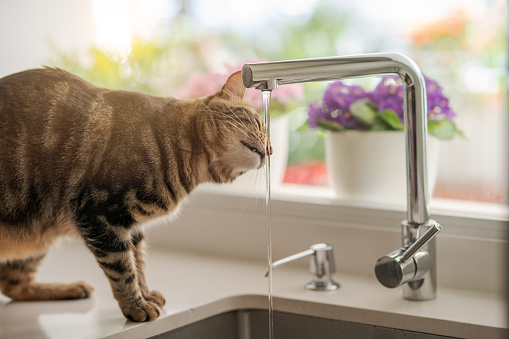
2. Key Features to Look For
2.1 Material Safety 🛡️
Alright, let’s start with the basics: what’s the fountain made of? You want to make sure that the material is safe for your pet. Cheap plastics? Not so much. Here’s what you should look for:
- BPA-free plastic or stainless steel are your best bets. Why? BPA is a chemical found in many plastics that can leach into your pet’s water, which isn’t ideal for their health. Stainless steel is not only rust-resistant, but it also reduces the chances of harmful bacteria growth. In fact, stainless steel reduces bacterial growth by 80% (PetMD, 2021). That’s a huge win for cleanliness!
- If you’ve ever had a plastic bowl that started to look funky after a while, you know how annoying that is. Stainless steel or BPA-free plastic is much easier to clean and maintain.
Here’s a quick comparison table:
| Material Type | Advantages | Disadvantages |
| BPA-Free Plastic | Lightweight, easy to clean, safe for pets | Can retain odors after extended use |
| Stainless Steel | Rust-resistant, reduces bacterial growth by 80% | Heavier, slightly more expensive |
2.2 Filtration System 💧
Now, let’s talk filtration. If you want your pet to drink fresh, clean water all day, you need a good filtration system. Smart fountains come with various filter types, but here’s what you want to keep in mind:
- A 3-stage filter system is ideal. These usually consist of carbon, foam, and ion exchange filters. Each stage serves a purpose:
- Carbon removes odors and chlorine.
- Foam traps hair and other debris.
- Ion exchange helps remove heavy metals, which can be harmful in high amounts.
- To keep the fountain working at its best, replace the filters every 2–4 weeks. Trust me, it’s worth it to get that fresh taste!
Here’s a breakdown of filter stages:
| Filter Type | What It Removes | Ideal Replacement Time |
| Carbon Filter | Odors, chlorine, bad tastes | Every 2–4 weeks |
| Foam Filter | Hair, debris, dirt | Every 2–4 weeks |
| Ion Exchange Filter | Heavy metals, minerals | Every 2–4 weeks |
2.3 Noise Levels 🤫
Let’s be real—if your pet’s water fountain sounds like a jet engine, they’re not going to drink from it. The noise level matters, both for your pet’s comfort and your sanity! Here’s what to consider:
- Look for fountains with a pump noise level of less than 30 dB—that’s library-quiet! You don’t want the constant hum disrupting your home, especially if it’s a fountain you leave on all the time.
- Submersible pumps tend to be quieter than external pumps, so keep an eye out for those. The quieter the fountain, the less stress your pet will have, and the less likely you are to get an earful from your dog or cat!
- One pet parent shared a funny testimonial: “My dog used to bark at the old fountain, but this one’s silent!” If that’s not a sign of a good purchase, I don’t know what is.
Here’s a quick guide to noise levels:
| Fountain Type | Noise Level (dB) | Pros | Cons |
| Submersible Pump | <30 dB (whisper-quiet) | Quiet, less disruption | Slightly more expensive |
| External Pump | 40-50 dB (noticeable hum) | Can be more powerful | Noisy, may irritate pets |
When choosing a smart drinking fountain, it’s all about finding the right balance of material safety, filtration system, and noise level. Your pet deserves clean, fresh, and easy-to-access water that promotes better hydration—and a smart fountain can provide all that and more!
Remember: not all fountains are created equal. But if you keep these key features in mind, you’ll be well on your way to picking the perfect one for your pet. And trust me, your furry friend will thank you for it! 🐶🐱💦

3. Capacity & Design
If you’ve ever been in the market for a smart drinking fountain, you know there are a lot of choices out there. But not all fountains are created equal, and it’s not just about the fancy tech features. The capacity and design of the fountain can make all the difference in ensuring your pet stays hydrated, happy, and healthy. Let me walk you through the key factors to consider when it comes to these features!
3.1 Size Matters – Finding the Right Capacity for Your Pet 💧
You might think that all fountains are the same size, but that’s far from the truth. The capacity of the fountain plays a huge role in keeping your pet hydrated throughout the day. Here’s how to figure out what size your pet needs:
- Small (1L): If you’ve got a single cat or a small dog like a Chihuahua or Pomeranian, a 1L fountain is perfect. It’s compact and still gives them plenty of water without being overwhelming.
- Medium (2L): For those of us with multiple pets—maybe you’ve got a cat and a small dog or a couple of kitties—2L is the sweet spot. It’s enough to keep the water flowing for a few days without constantly needing a refill.
- Large (3L+): If you’re a proud pet parent of a giant breed like a Great Dane or a couple of larger dogs, you’ll want to go for a 3L or more capacity. Larger fountains mean you won’t need to refill the water as often, which is a lifesaver!
Here’s a quick breakdown of fountain sizes:
| Size | Ideal For | Water Capacity | Pros |
| Small (1L) | Single cat, small dog (Chihuahua, Pomeranian) | 1 Liter | Compact, easy to store, lower cost |
| Medium (2L) | Multiple pets (2 cats, small dogs) | 2 Liters | Balanced size, perfect for multi-pet households |
| Large (3L+) | Giant breeds (Great Danes, large dogs) | 3 Liters or more | Less frequent refills, great for large dogs |
3.2 Shape & Accessibility – Design That Works for Your Pet 🐱🐶
Now, let’s talk about shape and accessibility—because your pet’s comfort matters, right? Not every design works for every type of pet, so consider their preferences and physical needs.
- Flower-shaped streams: If you’ve got a cat, especially one that’s a bit picky, a flower-shaped stream might just do the trick! Cats are naturally attracted to moving water, and the gentle flow mimics the sensation of a running stream. It’s almost like an outdoor water fountain right in your living room!
- Low-profile designs: Older pets or those with disabilities will appreciate fountains with a low-profile design. These fountains are closer to the ground, making it easier for pets with limited mobility to drink. If you’ve got a senior cat or dog, this can make a big difference in their daily hydration.
- Adjustable flow: Does your pet love to play and splash around, or are they more timid and shy? With a fountain that has an adjustable flow, you can customize how fast the water flows. This helps make the fountain a more inviting space for even the most skittish pets. For example, a timid cat might prefer a slow, gentle stream, while a playful dog might enjoy a more vigorous flow.
Here’s a quick summary of the design features:
| Design Feature | Best For | Why It Works |
| Flower-Shaped Stream | Cats (especially picky ones) | Mimics the flow of running water, cats are instinctively attracted to it |
| Low-Profile Design | Senior pets, pets with mobility issues | Easier access to water for pets with limited mobility |
| Adjustable Flow | Timid or playful pets | Tailor the flow speed to suit your pet’s personality |
3.3 Aesthetic Appeal – Fountains That Look Great in Your Home 🏠
Let’s be honest, we all want products that not only work well but also look good in our homes, right? Thankfully, smart drinking fountains aren’t just functional—they can also blend seamlessly with your home decor.
- Sleek designs: Gone are the days of ugly plastic water bowls cluttering up your living room. Many smart fountains have sleek, modern designs that look as good as they function. Think clean lines and minimalist aesthetics that blend right in with your living space.
- Transparent reservoirs: This is a small detail that makes a big difference! Transparent water reservoirs allow you to easily monitor the water levels without having to lift or disturb the fountain. It’s a simple feature that makes life so much easier.
- Example: Take the Petlibro Granary—it’s got a clean, modern look that pairs beautifully with most kitchen styles. Not only is it effective, but it’s something you wouldn’t mind having out on your counter.
Check out the design highlights in this table:
| Design Feature | Aesthetic Benefit | Example |
| Sleek, Modern Designs | Blends seamlessly with home decor | Fits into kitchens or living rooms |
| Transparent Reservoirs | Easily monitor water levels | No need to guess if it’s time to refill |
| Stylish Examples | Functional and visually appealing | Petlibro Granary – looks great in modern kitchens |
So when choosing a smart drinking fountain for your pet, size, design, and aesthetics all play a big part in creating a healthy, functional, and stylish drinking station. Whether you’ve got a small dog, multiple pets, or a giant breed, there’s a fountain out there that fits your pet’s needs and your home’s style.
Remember: the right fountain does more than just provide water—it keeps your pets hydrated, happy, and healthy while fitting in perfectly with your home decor. Cheers to fresh water and happy pets! 🐾💧
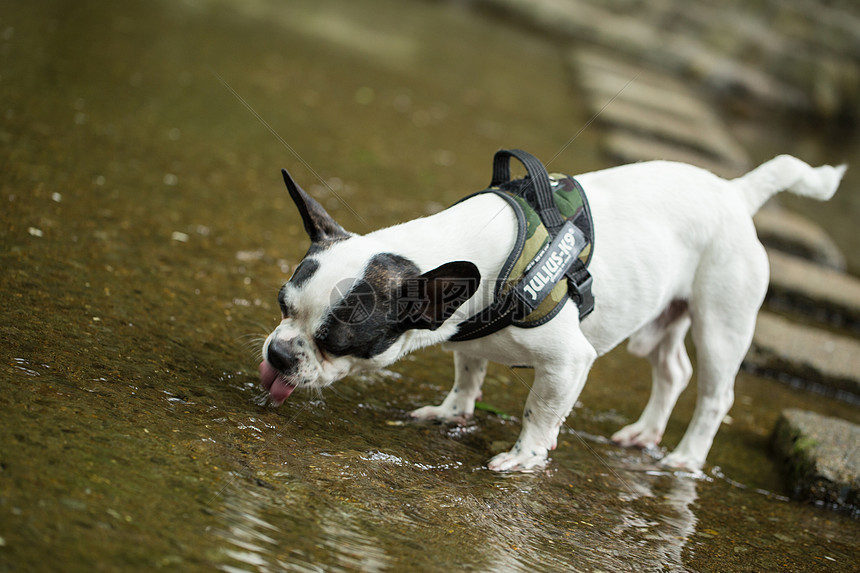
4. Safety & Durability
If you’ve been considering a smart drinking fountain for your pet, you’re probably already familiar with the convenience of it all—fresh, running water available whenever your furry friend needs a drink. But here’s something you might not have thought of yet: safety and durability. These features are just as important as the fountain’s ability to deliver hydration. Let’s dive into the details!
4.1 Anti-Slip Base – Stability Matters for Spilly Drinkers 🐕💦
If your pet is the type that gets excited and knocks things over (looking at you, puppies and curious cats), you’ll want to pay attention to the anti-slip base of your smart drinking fountain. A rubberized bottom or a non-slip base is a must-have feature to prevent spills.
- Prevents spills: We all know how quickly water can go everywhere when a pet gets too enthusiastic with their drink. An anti-slip base keeps the fountain securely in place, even when your pet is excitedly sipping away.
- Rubberized bottoms work best on tile or wood floors, providing extra grip to avoid any slipping or tipping over. If you have a smooth floor surface, make sure the fountain has a stable base that can hold its ground.
- Tip: Always check reviews before purchasing. If a product has lots of complaints about stability, you might want to steer clear of it. It’s better to pay a bit more for something that works well and lasts longer.
Here’s a quick look at the anti-slip base features:
| Feature | Benefit | Best For |
| Rubberized Bottom | Prevents the fountain from sliding or tipping over | Tile and wood floors, energetic drinkers |
| Non-Slip Base | Keeps the fountain stable during use | Homes with enthusiastic pets |
| Review Check | Verify stability before purchasing | Avoid buying unstable fountains |
4.2 Electrical Safety – Low-Voltage Pumps for Peace of Mind ⚡💡
When it comes to a smart drinking fountain, there’s an electrical component involved, and we want to make sure it’s safe, right? Electrical safety is a top priority, especially in households with pets who may be a little too curious about everything.
- Low-voltage pumps (5V–12V) are the safest options, minimizing the risk of electrical shocks. Low-voltage systems are less likely to cause harm if the wires get chewed on or damaged.
- Look for CE/FCC certifications. These marks indicate that the product has passed strict safety tests and meets electrical safety standards. If you’re not sure, check the product description or the manufacturer’s website to see if they mention these certifications.
- Example: The Pioneer Pet Raindrop uses a 12V low-voltage pump, offering peace of mind while keeping your pet’s hydration system running smoothly.
Electrical safety features at a glance:
| Feature | Benefit | Why It’s Important |
| Low-Voltage Pumps | Minimize electrical shock risks | Safer for curious pets and households |
| CE/FCC Certifications | Confirms the product meets safety standards | Ensures peace of mind in a pet-filled home |
| Example | Pioneer Pet Raindrop uses a 12V low-voltage pump | Reliable and safe option for your pet |
4.3 Chew-Proof Cords – Because Puppies & Kittens Love to Nibble! 🐶🐱
If you’ve got a puppy or a kitten, you know they have a natural instinct to chew on things. While they’re cute, it’s a problem when they decide to nibble on the cords of your smart drinking fountain.
- Reinforced cords with protective coatings are a must-have! These cords are designed to withstand the curious teeth of puppies and kittens. Look for cords that are chew-proof and durable—they’ll last longer and keep your pet safe from electrical hazards.
- Tip: Some brands take extra precautions and use protective coatings on their cords, making them a great option for homes with playful or teething pets.
- You want to be sure that even if your pet decides to explore the cables, they won’t be able to easily chew through them.
A summary of chew-proof features:
| Feature | Benefit | Best For |
| Reinforced Cords | More durable and resistant to chewing | Puppies, kittens, and curious pets |
| Protective Coatings | Adds an extra layer of protection against chewing | Homes with pets that love to nibble |
| Chew-Proof Materials | Ensures safety while preserving the life of the fountain | Keep your pet safe and the fountain functional |
When you’re choosing a smart drinking fountain, safety and durability should always be top priorities. From anti-slip bases to chew-proof cords and low-voltage pumps, these features ensure that your pet’s water station stays safe, stable, and long-lasting. And hey, a happy pet means a happy home, right? 😊
Remember: it’s not just about hydration—it’s about giving your pets the best care possible. So, invest in a fountain that will work for both you and your pet for years to come!
Let me know what features you look for when choosing a pet fountain. Have you had any experience with durability issues before? I’d love to hear your thoughts!
Sources:
- American Veterinary Medical Association (AVMA)
- FDA on Stagnant Water and Bacteria
- PetMD on Stainless Steel Benefits
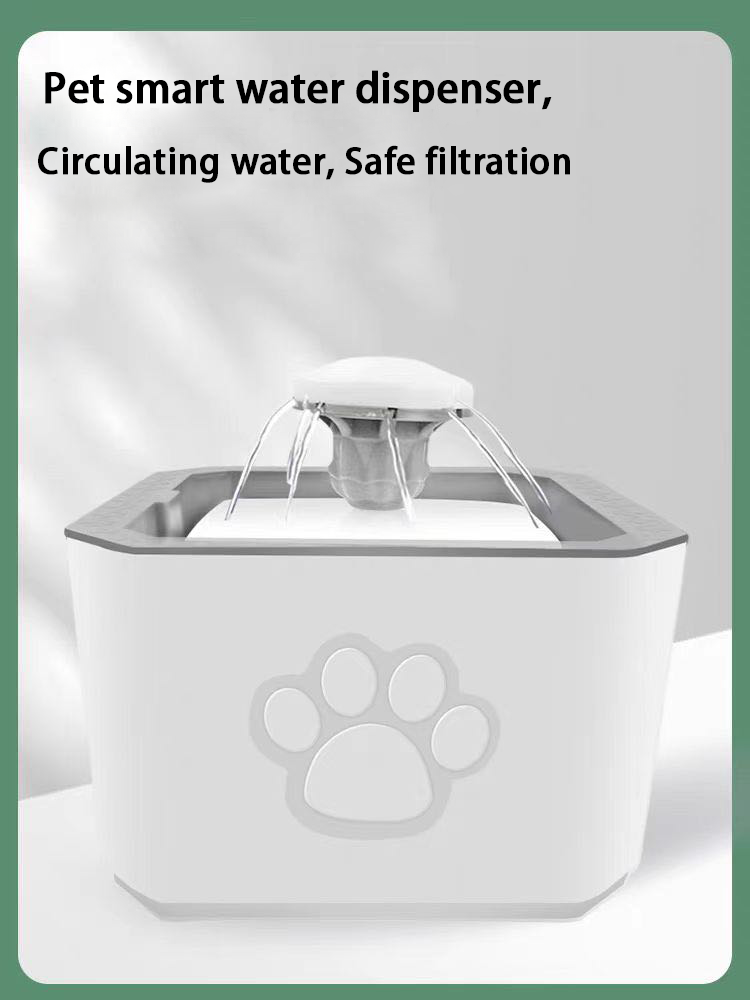
5. Maintenance & Cleaning 🧼🐾
Hey, friend! You’ve probably heard about how great a smart drinking fountain is for keeping your pet hydrated, but let’s talk about something just as important: maintenance and cleaning. If you’re like me, you want something that’s easy to maintain, doesn’t break the bank on filter replacements, and stays free from algae buildup. Luckily, there are some nifty features in pet fountains that make it super simple to keep things clean and running smoothly. Let’s dive into how you can keep your pet’s drinking fountain in tip-top shape!
5.1 Easy Disassembly – Say Goodbye to Complicated Cleanups 🧽
Cleaning a fountain can feel like a hassle if it’s hard to take apart. Trust me, you don’t want to struggle with a fountain that has too many tiny crevices where gunk can hide. Here’s where easy disassembly comes in handy.
- Dishwasher-safe parts: Many smart fountains now have dishwasher-safe components, so after a long day, you can just pop the parts in the dishwasher and call it a day. Convenient, right?
- Avoid fountains with hard-to-clean crevices: Look for fountains with minimal nooks and crannies. The fewer hard-to-reach spots, the easier it is to clean and sanitize.
5.2 Filter Replacement Costs – Budget-Friendly Tips 🏷💵
The last thing you want is to be hit with surprise costs for replacing filters in your pet fountain. Thankfully, there are ways to keep costs down while maintaining clean water for your pet.
- Filter Replacement Costs: Expect to spend about $5–$15 a month for filter replacements depending on the brand and model. While it’s not a huge cost, it can add up over time, so it’s good to plan ahead.
- Subscription Plans: Some brands offer subscription plans that send you replacement filters on a regular schedule. This can actually save you money in the long run and prevent you from forgetting to replace the filters!
- DIY Option: If you’re looking to save even more, you can rinse and reuse foam filters temporarily. It’s not the best solution long-term, but it can work in a pinch to stretch your budget. Just make sure you clean it thoroughly before reusing!
Here’s a breakdown of filter replacement costs:
| Filter Option | Estimated Monthly Cost | Pros |
| Replacement Filters | $5–$15/month | Regular cleaning and maintenance |
| Subscription Plan | Varies by brand | Convenient, cost-saving |
| DIY Option (Rinse/Reuse) | $0–$5 (initial cost) | Saves money in the short term |
5.3 Algae Prevention – Keep Your Fountain Fresh & Clean 🌱🦠
No one wants to deal with algae growth in their pet’s water fountain. It can happen quickly if your fountain is in a sunny spot, and it’s a pain to clean. Here’s how you can keep things algae-free and prevent the dreaded biofilm buildup.
- Keep fountains away from sunlight: This is a big one! Sunlight promotes algae growth. Try to place your fountain in a shaded spot, ideally somewhere that doesn’t get direct sunlight for extended periods.
- Weekly scrubbing with vinegar: A quick scrub with a vinegar solution can do wonders. Vinegar’s natural acidity helps break down biofilm and keep your fountain clean. Just mix equal parts vinegar and water, scrub, rinse, and you’re good to go!
- UV Sterilization Models: Some fountains come with built-in UV sterilization features. These models use UV light to inhibit algae growth, which is a super convenient way to avoid manual cleaning.
Here’s a quick look at algae prevention tips:
| Prevention Method | Benefit | Best For |
| Avoid Direct Sunlight | Prevents algae from forming in the first place | Homes with sunny spots |
| Weekly Vinegar Scrub | Kills bacteria and biofilm on contact | Easy DIY method for algae prevention |
| UV Sterilization Models | Prevents algae growth using UV light | Hands-off option for algae-free water |
Wrapping Up – A Clean Fountain Means a Happy Pet! 🐾
Maintaining a smart drinking fountain doesn’t have to be complicated. With easy disassembly, manageable filter replacement costs, and simple algae prevention, you can keep your pet’s water fresh and safe. These small features make a huge difference in your pet’s hydration experience, and as an added bonus, they make your life easier too. 💦
If you’re looking for a pet drinking fountain that’s easy to maintain, safe for your pet, and durable enough to last, these are the things to keep in mind. After all, a clean water source is a happy, healthy pet—don’t you agree?
Let me know if you’ve tried any of these maintenance tips or have your own cleaning hacks! I’d love to hear from you.
Sources:
- PetMD on Fountain Maintenance
- American Veterinary Medical Association on Hydration
- FDA on Stagnant Water

Conclusion
Choosing the right fountain transformed Whiskers from a tap-beggar to a hydrated, happy cat. Remember, every pet is unique—observe their habits and prioritize their needs. Ready to upgrade? Check out our top-rated fountains and give your pet the gift of fresh water!

